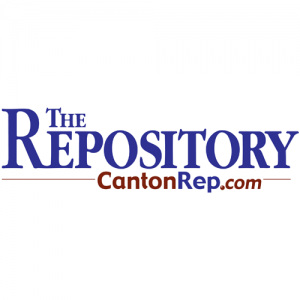
New York politics has been rocked by back-to-back bribery scandals. State Senator Malcolm Smith and several New York City Republican Party leaders have been indicted and charged with a scheme to enable Smith, a Democrat, to enter the Republican Party primary for Mayor. And Eric Stevenson, a State Assemblyman, was indicted for allegedly trading the introduction of legislation for cash. Stevenson was “stung” through evidence provided from a wire worn by fellow Democratic Assemblyman, Nelson Castro.
U.S. Attorney Preet Bharara appears to be conducting himself in a professional manner and without a political agenda in prosecuting these cases. However, the nexus of our elections, our government and the criminal justice system raise profound concerns. It appears that unbeknownst to voters and his fellow legislators, Assemblyman Castro won reelection while under indictment, wired and doing undercover work for law enforcement. What information of no legitimate interest to prosecutors but personally or politically sensitive was transmitted? How will the revelation that your fellow Assembly Member may be wired impact on the legislative process?
The U.S. Attorney is doing his job. The reform of our political process is ours. In my view, the best antidote to corruption is democracy. A political process that is transparent and invites the participation of all the people is less vulnerable to corruption than one which depends on the authority of a handful of people. The process by which the Republican Party determines who can run in its primary is a good example. Under New York Election Law, Smith could run in the Republican primary, despite his Democratic enrollment, only with the support of three of the five Republican county chairs in New York City. These gatekeepers hesitated and vacillated and, as Smith’s prospects dimmed, he is alleged to have resorted to bribery to obtain passage through the gateway.
There are two kinds of reforms being floated: those designed to make apprehension, prosecution and conviction easier and the penalties higher, and those that address the structural weaknesses in our political process that breed corruption. I am wary of the first approach — its claims to deterrence notwithstanding. The U.S. Attorney already has some pretty powerful tools at his disposal. It is proposed that we extend them to elected officials, such as local DA’s or the State Attorney General. That would place them in the hands of people who are much closer to the corrupt process itself and more likely to be tempted to use their power for partisan ends. I like that there is distance between Mr. Bharara and those he is charged with prosecuting.
Governor Cuomo has proposed that in addition to bribery being illegal, it would be a crime for any government employee to fail to report attempted bribery. In other words, every government employee would be required to become a snitch. Mr. Cuomo is quoted in the April 10, 2013, New York Times as stating, “When it comes to public integrity, you can’t have enough police officers on the beat, right? You can’t have enough sets of eyes.” What values are sacrificed to accomplish that? What are the regimes that have taken that approach?
The other set of reforms, restructuring the political process, bear close scrutiny as well. One approach is to focus on the money, for example, a crackdown on lobbyists. And advocates of campaign finance reform are calling for extending the New York City system of public funding statewide, on the theory that if you publically finance campaigns for public office then, somehow, legislators will be less likely to take money in exchange for political favors. I am not sure I understand the logic here. For one thing, the Republican Party scandal took place in New York City. Second, the money used in the alleged bribes likely was intended for personal use, not for reelection campaigns. There is also a renewed call to do away with “member items,” where legislative leaders dole out money to legislators who do their bidding to fund projects in their districts.
These “cures,” in my opinion, do not go far enough and ignore the role of political parties in fostering the corrupt culture in Albany and New York City.
The speaker or majority leader of each house is the leader of his or her party caucus, and has responsibility for advancing the party’s agenda. The withholding of member items is a powerful tool in enforcing party discipline.
Campaign finance reform, as presently constituted, also reinforces party power. The New York City public funding program provides candidates with money to use in a primary and, if they win, they get another infusion of money for the general election. Candidates who do not run in primaries get only one dose of funding. These and other advantages, not available to independent and most minor party candidates, enhance the chances of success of major party candidates in the general election. Any public funding system must treat all candidates (major party, minor party and independent) equally.
The Republican scandal exposes how the role of parties, as gate-keepers in the political process, leads to corruption. There is a solution. If you eliminate the “gateway,” then no one can charge a candidate to pass through it. That’s what nonpartisan municipal elections would do. It is a reform that has been fought tooth and nail by the parties and their networks. Perhaps the single positive thing to come out of the current and still unfolding scandal is a renewed call by Mayor Michael Bloomberg, the Citizens Union and the New York City Independence Party to do away with party primaries and replace them with a nonpartisan system. In a nonpartisan system, candidates run without the authorization of any party and are not competing for a party line. And all voters make their choice in a first-round primary. The top two finishers, regardless of their party, compete in the general election. This reform allows full participation by the City’s one million voters who are independents and members of minor parties in the crucial first round of voting. The States of California and Washington have adopted a similar system (called “top-two“) for all state offices and for election to the U.S. Congress.
There are other pro-democracy reforms that expand democracy and help break the hold of the party system on electoral outcomes. They are term limits, same-day voter registration and early voting. Reforms that allow more people to vote and make it easier to do so, along with those that reduce the power of incumbency, can break the hold the parties have on the primary outcomes. Turnout is low in party-primary elections (10 to 15 percent of party members, likely 5 to 10 percent of the electorate in New York City) and is skewed toward party activists and municipal union members on the Democratic Party side and Tea Party activists on the Republican Party side. Closed partisan primaries (the norm for state and federal elections in most states) make elected officials beholden to narrow ideologies and powerful special interests. And given the value of a party line under this system, it increases the possibilities for corruption.
The fight against corruption and the fight to expand democracy go hand and glove. If we do not recognize this, we allow those who seek greater control and less democracy to increase their power and the power of the parties they lead. This creates possibilities for corruption on an even larger scale.




